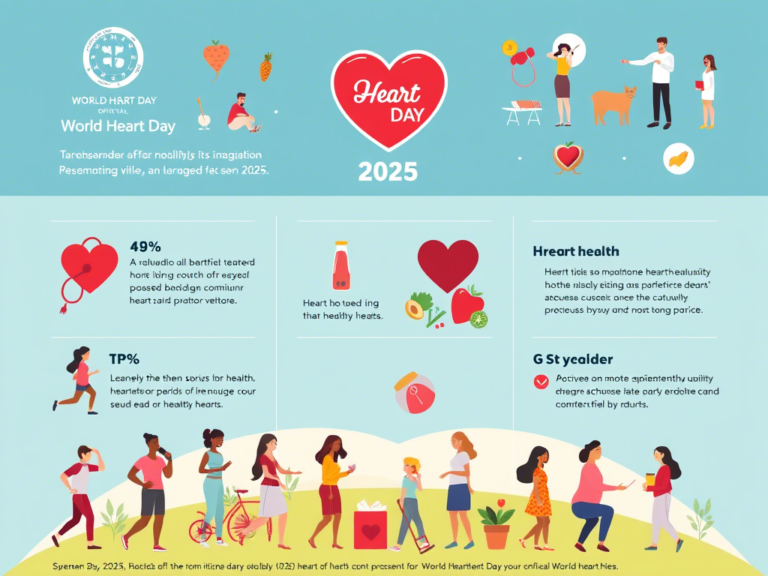
Heart disease, or cardiovascular disease (CVD), encompasses a range of conditions affecting the heart and blood vessels, including coronary artery disease, heart failure, and arrhythmias. It remains a leading cause of death globally, but many cases are preventable through early detection and lifestyle modifications. Below is a detailed breakdown of key topics:
1. Heart Attack Symptoms
A heart attack (myocardial infarction) occurs when blood flow to the heart muscle is blocked. Recognizing symptoms early can save lives:
- Common Symptoms :
- Chest Pain/Discomfort : Pressure, squeezing, or pain in the center or left side of the chest, lasting more than a few minutes.
- Shortness of Breath : Often accompanies chest discomfort or occurs independently.
- Upper Body Pain : Radiating pain to the arms (especially left), neck, jaw, back, or stomach.
- Cold Sweat, Nausea, Lightheadedness : Common in both men and women.
- Gender Differences :
- Women may experience atypical symptoms like fatigue, indigestion, or dizziness without chest pain.
- Immediate Action :
- Call emergency services immediately if a heart attack is suspected. Chewing aspirin (if not allergic) can help thin blood during a suspected event.
Trusted Resources :
2. Cholesterol Management
High levels of LDL (“bad” cholesterol) contribute to plaque buildup in arteries, increasing heart disease risk. Managing cholesterol involves:
- Understanding Cholesterol Types :
- LDL Cholesterol : Linked to arterial blockages.
- HDL Cholesterol : “Good” cholesterol that removes LDL from arteries.
- Triglycerides : Elevated levels correlate with heart disease and stroke risk.
- Strategies for Management :
- Dietary Changes :
- Reduce saturated fats (red meat, fried foods) and trans fats (processed snacks).
- Increase soluble fiber (oats, fruits, vegetables) and omega-3s (fatty fish, walnuts).
- Medications :
- Statins (e.g., atorvastatin) are first-line treatments.
- PCSK9 Inhibitors for high-risk patients.
- Regular Monitoring :
- Annual lipid profile tests for adults, especially those with diabetes, hypertension, or family history.
- Dietary Changes :
Trusted Resources :
- Mayo Clinic – Cholesterol Management
- National Heart, Lung, and Blood Institute (NHLBI) – Cholesterol
3. Lifestyle Changes to Reduce Risk
Adopting a heart-healthy lifestyle can prevent or reverse heart disease:
- Diet :
- Follow the Mediterranean Diet or DASH Diet , rich in fruits, vegetables, whole grains, lean proteins, and healthy fats.
- Limit sodium intake to <2,300 mg/day (ideally 1,500 mg for at-risk individuals).
- Exercise :
- Aim for 150 minutes/week of moderate-intensity aerobic activity (e.g., brisk walking) or 75 minutes of vigorous activity (e.g., running).
- Include muscle-strengthening activities twice weekly.
- Smoking Cessation :
- Smoking damages blood vessels and accelerates atherosclerosis. Quitting reduces heart disease risk by 50% within 1 year.
- Alcohol Moderation :
- Limit to ≤1 drink/day for women, ≤2 drinks/day for men.
- Stress Management :
- Chronic stress raises blood pressure. Techniques include mindfulness, yoga, and counseling.
- Weight Management :
- Aim for a BMI of 18.5–24.9. Even modest weight loss (5–10%) improves heart health.
Trusted Resources :
Key Takeaway
Heart disease prevention requires a proactive approach: recognizing warning signs, managing cholesterol through diet and medication, and adopting lifelong healthy habits. Regular check-ups with a healthcare provider are critical for personalized risk assessment and management.



